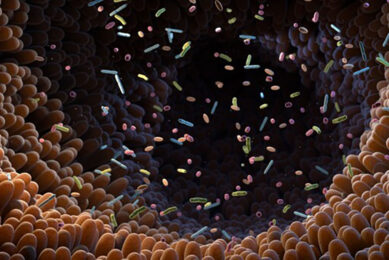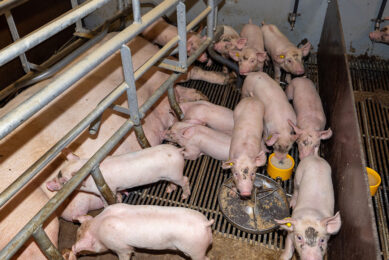Medium Chain Functional Lipids: An underestimated ingredient

There are high hopes for medium chain functional lipids in the fight against bacteria and viruses. These functional lipids can improve gut health by affecting microbiota and immune function.
Believe it or not, the antimicrobial properties of medium chain functional lipid acids have already been known since the 1800s. The implementation into feed applications was simply overlooked due to the widespread acceptance and use of antibiotics. With the increasing concerns over antibiotic resistant bacteria and legislation restricting the use of antibiotics, there is a renewed interest in functional lipids. Furthermore, the positive influence on the gut health and therefore the preventative usage is obviously something to look into. Each medium chain functional lipid (Medium-chain fatty acids MCFA, Medium-chain-monoglycerides MCM and medium-chain triglyceride MCT) have a unique structure and activity. Therefore, a better understanding in the mode of action and the broad options of usage are of high interest.
The nature of functional lipids
In nature, these fats can be found, predominately in the triglyceride form, in palm kernel and coconut oil and in the milk fat of some animal species. As fat, they provide energy, but due to their chain length and unique structures (Figure 1), they also exhibit other functionalities and can be referred to as functional lipids. These medium chain functional lipids can be antimicrobial, antiviral, antifungal and anti-inflammatory. This is especially the case for MCM having the fatty acid attached in the 1-alpha position. Therefore, these medium chain functional lipids can improve gut health by beneficially affecting diet, intestinal microbiota and immune function. Depending on the temperature MCMs are liquid or solid. Due to their higher efficacy, they have a lower inclusion rate compared to MCFA, making them easier to handle.
Figure 1 – Fatty acid structure.
Click here to enlarge this figure
Mode of action
These modes of action fall into 3 categories:
- Increased cell permeability,
- Inhibition of enzymes and nutrient uptake and
- Disruption of the electron transport chain.
Increased cell permeability of bacteria or enveloped viruses is the primary target. Medium chain functional lipids form double-layered micelles that can fuse with the bacterial cell membrane. This fusion can result in the formation of membrane surface pores and tubes causing cell leakage. At high enough concentrations, fatty acids can completely solubilise the cell membrane (Figure 2). Due to the change of the cell membrane structure and fluidity, the receptors and enzymes needed to import key nutrients are impaired. Next to increased cell permeability and the inhibition of enzymes, medium chain functional lipids can disrupt the electron transport chain in the cellular membrane. They directly bind to the transport carriers and changing the structure via increased membrane fluidity resulting in less energy for the cell.
Other proposed mode of actions for medium chain functional lipids are lowering the pH inside and outside the cell, decreasing pathogen toxin production, interfering with pathogen adhesion and disrupting cell to cell signalling.
Figure 2 – Cell membrane structure.
Functional lipids in practice
In a trial carried out at Pipestone in the USA in 2019, LipoVital reduced PRRS virus in the feed by 67%. It reduced clinical disease compared to the control group and successfully controlled viral infections. The test also revealed that the growth rate was 2.5 times higher than in the control group. A performance trial carried out at the University at Rostock, Germany in 2019 focused on the performance and health parameters in broiler feeding with an additional clostridia challenge. The results showed improved performance (higher daily gain/improved FCR) in the broilers. LipoVital also had an influence on fatty liver syndrome and significantly reduced C. perfringens in the bird. There was an improvement on the growth performance in nursery pigs with Streptococcus suis issues. LipoVital reduced mortality rates and improved the feed conversion rate, which in turn resulted in a higher income for the farm. This trial was conducted in cooperation with a German feed producer.
At the Kaseart University of Bangkok, LipoVital was used in white shrimp in a trial where the focus was on growth, survival, immune response and intestinal bacteria composition. The study showed there was a significant increase in immune functions and performance as well as a reduction in mortality rates.
Medium chain functional lipids show promising results and contribute to a stable gut health and therefore to more robust animals.
References and additional information available on request
Author:
Christian Cordts, Product Manager Feed Additives, Berg+Schmidt
 Beheer
Beheer







 WP Admin
WP Admin  Bewerk bericht
Bewerk bericht